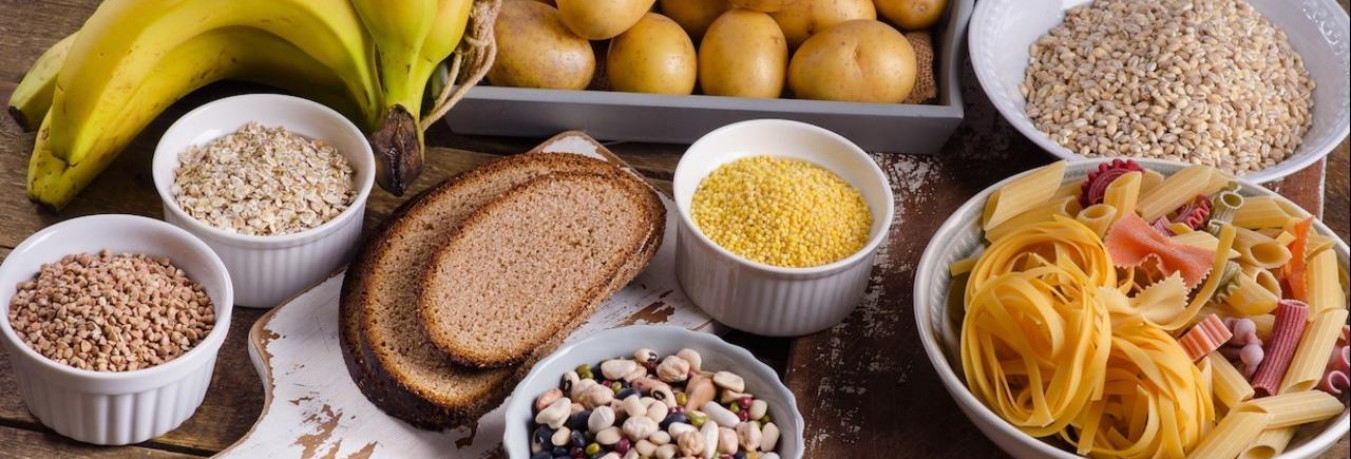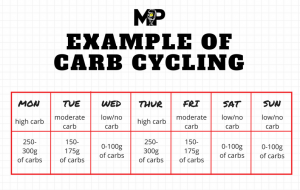
Carb Cycling: A Good Way To Lose Fat?
Apr 2, 2018 mindpumpWhen it comes to fat loss, there are hundreds of diets and options on the convoluted horizon. Over the years I have watched the rising popularity of the paleo, vegan, IIFYM, Atkins, Zone, Keto, and so many other diets I honestly can not remember. Perhaps the hottest diet now (and it’s not new, but like many diets it became more popular long after its conception) is carb cycling.
What is carb cycling?
Carb cycling, in theory, is really quite simple. The name “carb cycling” refers to the daily undulation or cycling of carbohydrate intake. The diet generally consists of days that can be categorized the following way:
• High Carb Day(s): High relative to the individuals caloric intake, or a carbohydrate level that has the persons daily caloric intake around maintenance. Generally paired with a reduction in calories from fat.
• Moderate Carb Day(s): Moderate carbohydrate days generally leave an individual slightly below their average daily caloric needs, with the deficit coming from carbohydrate.
• Low/No Carb Day(s): These are exactly what they sound like. A Day with low to no carbohydrate intake creating a very large deficit for the individual calorically. Generally, the dieter will have a few more calories from fat on this day.
NOTE: Typically, the daily protein intake ( in grams) for this individual will be close to, if not the exact same on a daily basis. Carbohydrate and fat are generally what is manipulated.
An example (not necessarily optimal) representation can be seen in the table below.

What are the “Benefits” of Carb Cycling:
The quotation marks around the words benefits are to give you, the reader, an understanding that I as a coach am skeptical of many of the anecdotal and reported benefits of carb cycling. While a great deal of the claims made about this diet are unsubstantiated within the scientific community, many claim that carb cycling does the following:
• Accelerates fat loss (likely a water loss and confirmation bias).
• Lowers insulin sensitivity.
• Reduces overall “craving” of carbohydrate.
While these are all potentially great benefits, they are secondary benefits at best, and they are not at the roost cause of this diets effectiveness. The secret reason carb cycling works is the same reason any other diet works, through a good old fashion caloric deficit.
My Thoughts on Carb Cycling:
While I as a coach do not necessarily buy into a lot of the fluff flying around about this diet, and I certainly don’t subscribe to the rhetoric of some of these Instagram/youtube carb cycling charlatans – I do see some functional applicability of this technique, and here’s how I WOULD USE IT:
Step 1: Understand what each day is supposed to do.
Low carb days allow for a rapid reduction in overall calories from the one nutrient you don’t need to survive (carbs). Moderate carbohydrate days will allow you to still maintain the ever important deficit, but work to increase training intensity/recoverability. High days allow for a “refeeding” effect for many and promote a more anabolic internal environment while maintaining calories at maintenance or slightly above.
Step 2: Calculate your caloric needs, cycle carbs accordingly.
If you need to eat 2600 OR LESS to lose weight you might calculate your high days at 2600 calories, your moderate days at 2200, and your low days at 1800, for example. The drop in calories should come from removing carbs. The caloric drops don’t even need to be that steep if a dieter feels the need for more they can add calories from fat, but this may slow down fat loss.
Step 3: Cycle your carbs around your workout programming,
This is a logical yet often forgotten part of this diet. Your cycling of carbohydrates should align with the demands of your training, for example – one should have their high carb day on their harder training day to promote recovery and glycogen repletion, and I would suggest aligning the low carb/no carb day(s) with the days you either rest or have the lowest training demand.
Step 4: Protein and Fats are your friends:
If you want to optimize this you need to ensure that you are performing well and are nourished. When carb cycling protein generally runs a bit higher then it might in many diets, and fats tend to inversely follow carbohydrates. So as carbs go down, fats should go up and protein should at the very least stay the same. As carbs go up, fats should drop and protein might drop some, but I wouldn’t recommend dropping it below .7 grams/lb of body weight.
My Take Home Points:
• Carb cycling works. Not magically, but by creating a deficit.
• It may work well for you if you only train a few times/week.
• It may NOT work well for you if you do a great deal of endurance work/hard training.
• It is imperative that even on your high days you don’t go overboard and lose your deficit (this often happens with CC, binge episodes on high days are quite common).
Author: Daniel Matranga
https://twitter.com/dynamic_danny
https://www.instagram.com/dynamic.danny
NASM: CPT, CES, PES, WLS, SFS, WFS, GFS, YES
ACE: TES, OES, and MBS







